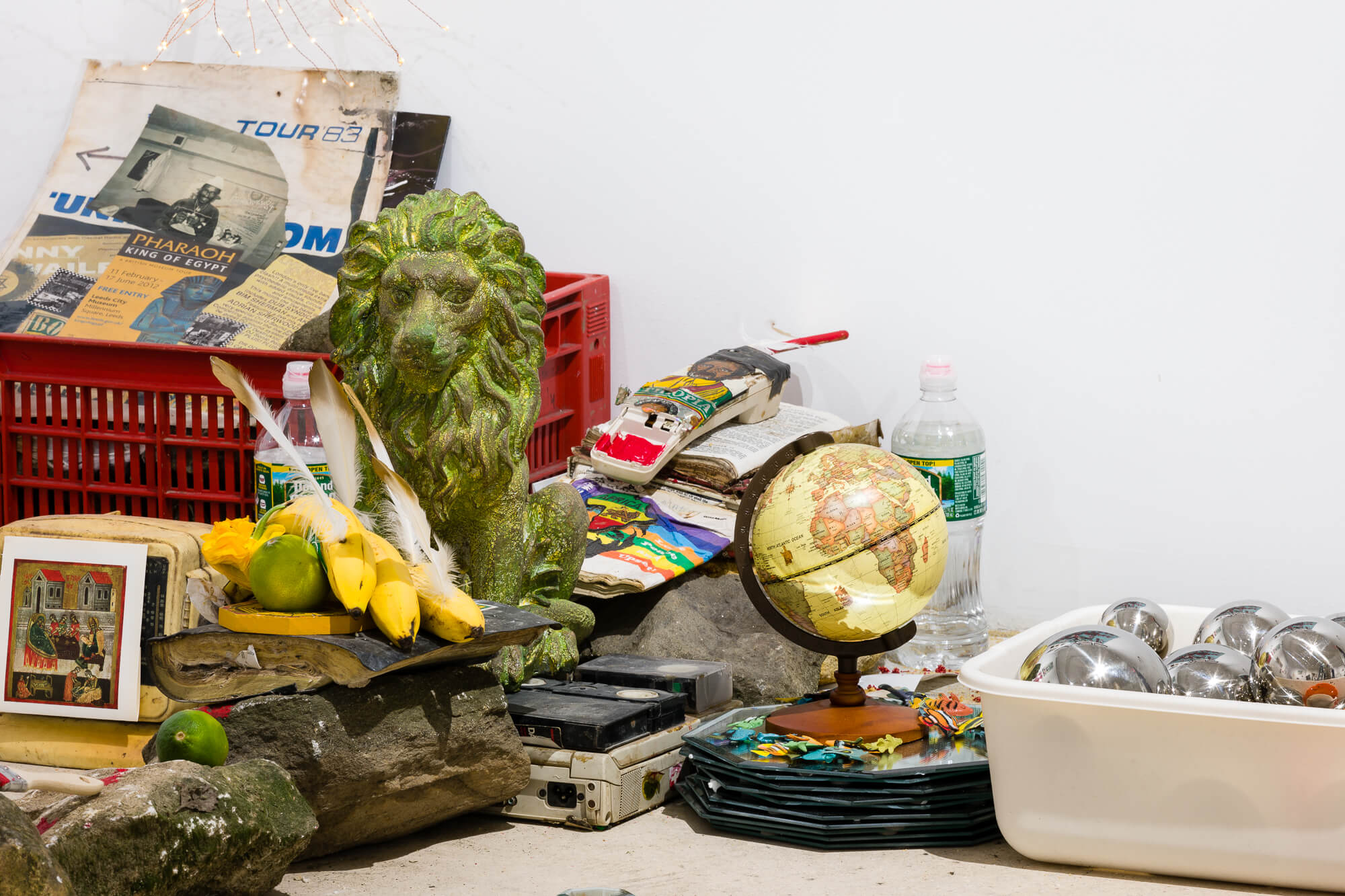Lee “Scratch” Perry: MIRROR MASTER FUTURES YARD | ArtNews
May 09 2019

“Don’t mess with my birds,” Lee “Scratch” Perry said—apropos of nothing—while placing a feather into his electric-pink hair. I had not messed with his birds and definitely would not be doing so after receiving such a warning. It was late at night a few weeks ago in New York, and the pioneering Jamaican reggae musician was wrapping up the installation of his first institutional exhibition, “Mirror Master Futures Yard,” on display at the Swiss Institute in the East Village through June 2.
Sensing my confusion about the birds, Perry beckoned me back into a room where rocks, leaves, drawings, print-outs, and paraphernalia were scattered on the floor as heavy reggae issued from a speaker. He pointed to the feather on his head and said, “That’s the first pen”—an allusion, it seemed, to a quill. Then he reached for my notebook and placed a sticker of an owl on the front of it. Somehow, it felt like a blessing.
Blessings of the kind are not necessarily easy to come by. Lorenzo Bernet, a Zurich-based independent curator who organized the exhibition with the Swiss Institute, laughed that, while they were working together, Perry once tried to throw a rock at him. Still—“I love the work so much,” Bernet said. “It’s dub in physical form.”
As a musical genre, the reggae variant of dub gets its name from the act of “dubbing” different versions of songs, with echoes and strange sound-effects that have proved prominent in the evolution of remix culture. As he does with sound recordings, Perry’s does with objects in his show. In one arrangement, Christmas ornaments are mounted over magazine ads, which are mounted over original drawings, which are mounted on canvas—and so on. In another nearby, a mirrored cross bares old shoes, candles, a figurine of the Black Madonna, and a bowl of water filled with fake fish.
The objects come from anywhere and everywhere. Some of them are relics from Black Ark, Perry’s storied recording studio in Kingston, Jamaica, that burnt down. Others he picked up at tourist shops on the East Village main drag of St. Marks Place. From a distance, the assembly could be dismissed as a bunch of junk, but up close, a shrine-like quality comes through.
“I think it was a little bit of a shock for him to see some of these pieces in this setting,” said Lady Nigel Butterfly, one of the artist’s fellow rainbow-haired assistants. “I don’t know if he was ready for it.”
No longer in his homeland of Jamaica, Perry currently lives in a small town in Switzerland called Einsiedeln. “I like Switzerland very much,” he said. “There’s too much bad people in Jamaica—too much evil, too much violence.”
Intensely present in person, Perry moves slowly but purposefully, his eyes alive with energy. After he won a Grammy award for Best Reggae Album with Jamaican E.T. in 2003, he has released more than 20 records (on top of the many he made or produced dating back to the 1960s). His newest,Rainford, is a groove-heavy, wah-wah-intensive collection of songs set for release on May 31 from the label On-U Sound. The mournful single “Let It Rain” is accompanied by a collage-style video with allusions to the Bible, mysticism, and past U.S. presidents. The albums closing track, “Autobiography of the Upsetter” (Perry’s long-held nickname) walks through his long life and reveals his earthly mission to “wipe out evilness … wipe out racism.”
At the age of 83, Perry shows few signs of slowing down. Looking out over the art show he put together while staying with the music that made his name, I asked if he plans on taking a break from working any time soon. His answer was clear: “When the black spirit says to stop, I’ll stop.”
By Annie Armstrong
